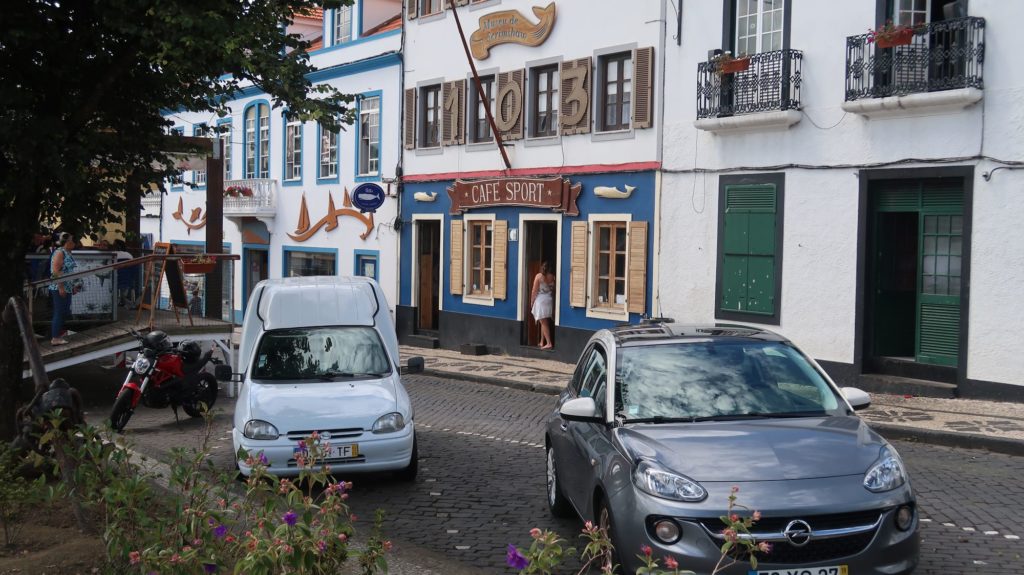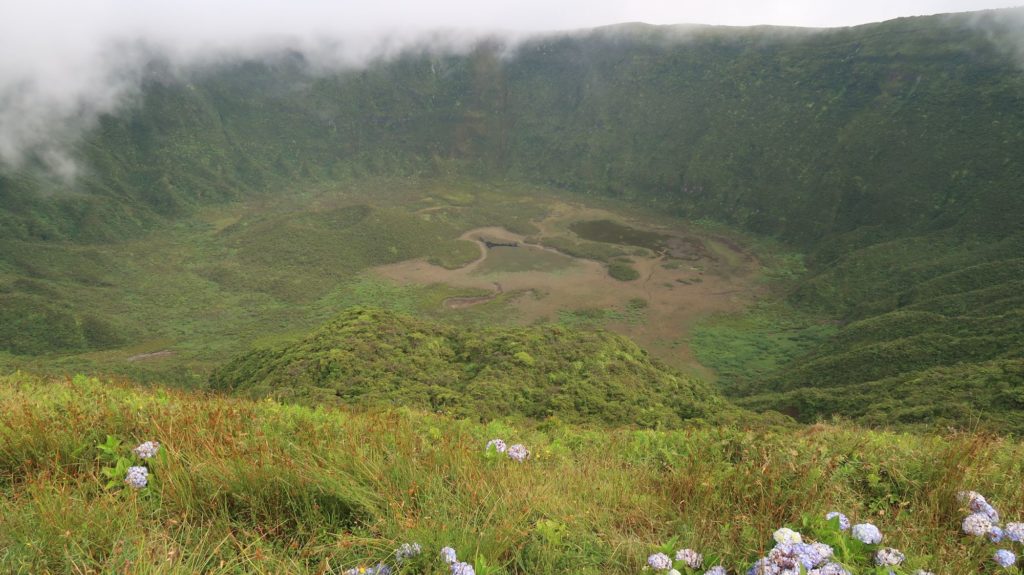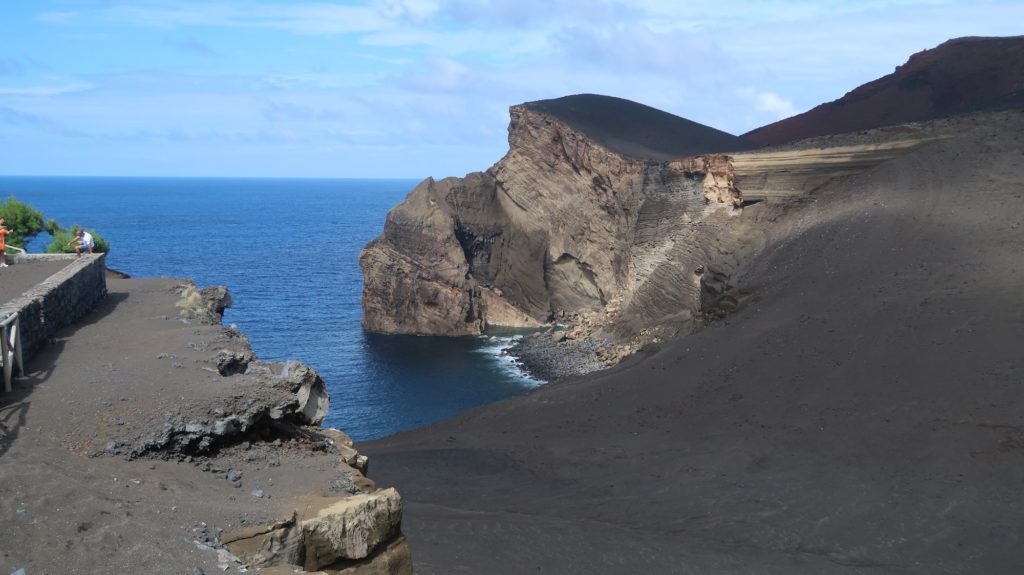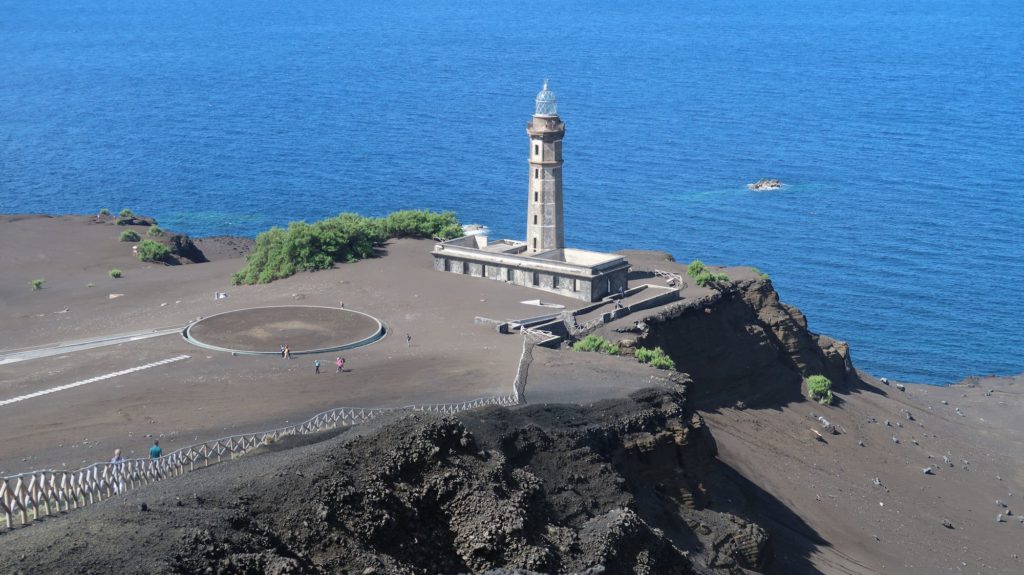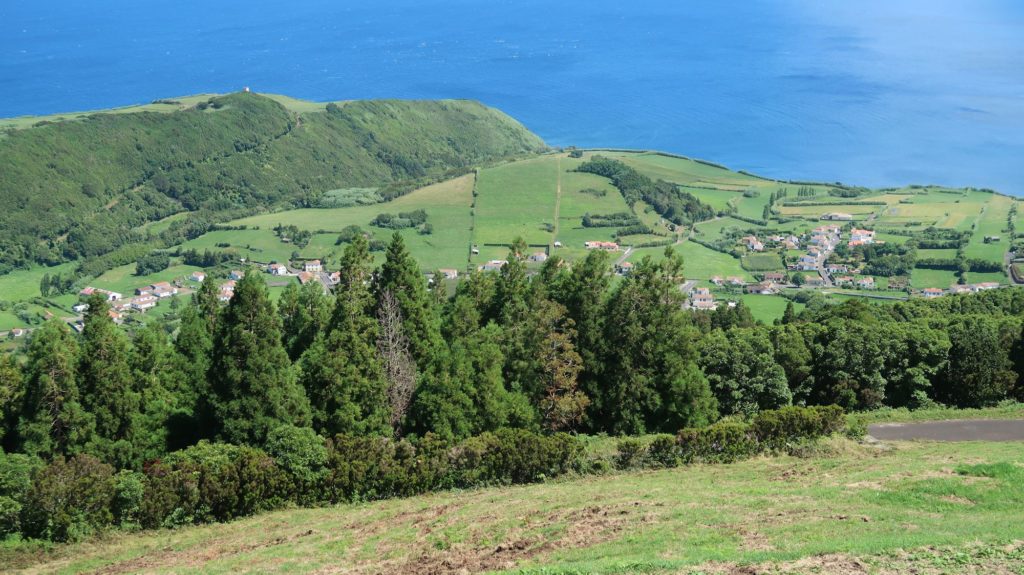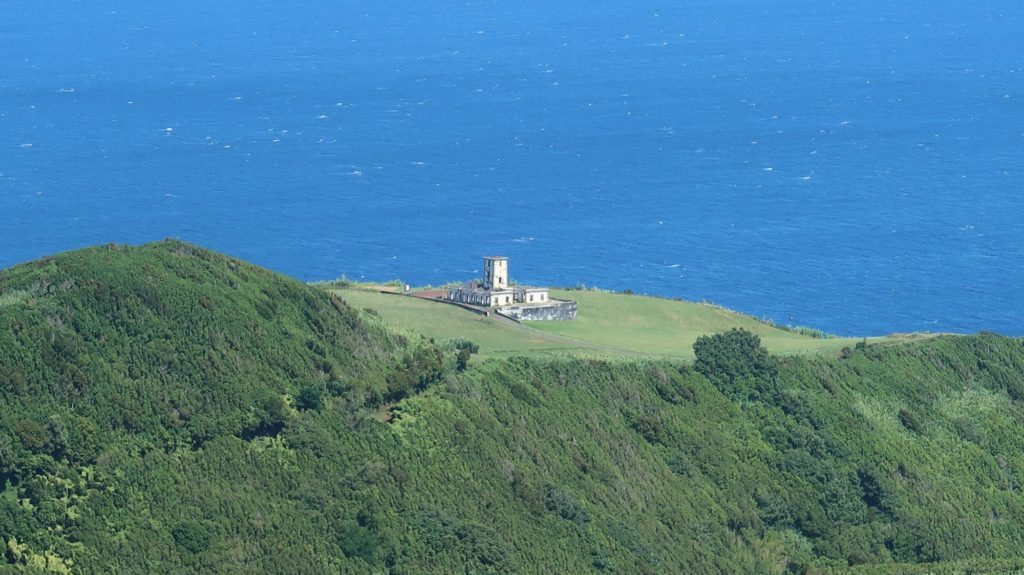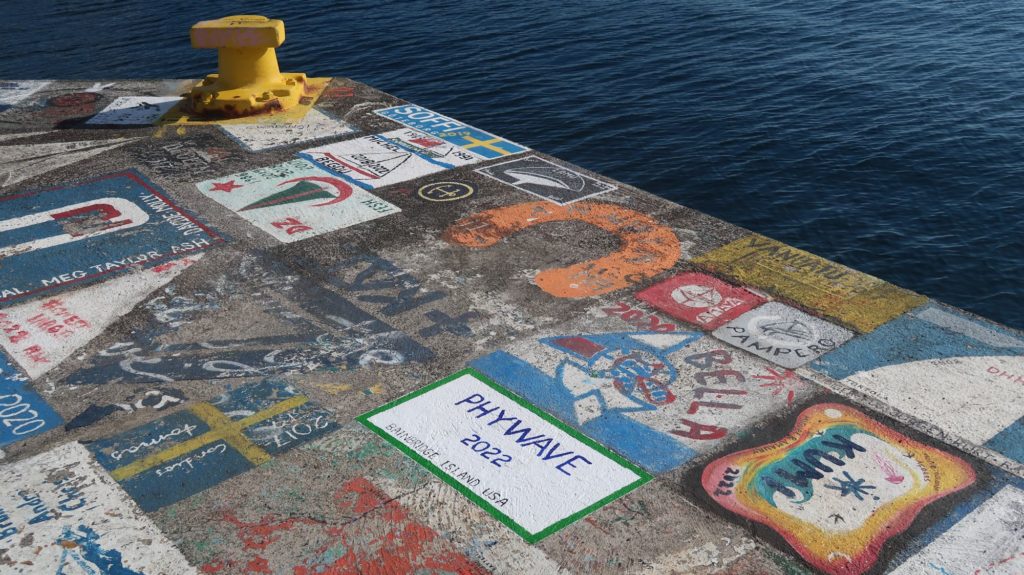I arrived in Horta Harbor on the morning of August 23 after a 21 day, 2404 nm passage from Norfolk, VA. The reception dock, which is also where fueling is done, was crowded with boats so I had to drive around in circles for 45 minutes while refueling boats cleared out. Once on the dock clearing in to Portugal went very efficiently with the first stop at the marina office followed by a stop at the immigration office across the hall. After being on a moving, rolling boat for 21 days my first steps off the boat onto solid ground were a little wobbly, like the ground was now moving. It took several hours for this to wear off.
Fortunately I arrived at a time when Horta Marina was not crowded as it can be in May through July. They had a roomy berth for Phywave in the south marina on J dock making it convenient to get to town. At busy times boats often have to anchor in the harbor and take their dinghy every time they want to go into town.
With Phywave secure I started exploring Horta with my first lunch the day I arrived at the famous Cafe Sport which I can see from my boat. Although famous as a hangout for ocean-going sailors it is now mostly a tourist place. It is open all day, every day unlike most restaurants here. I also paid a visit to the hipermercado where I would later buy provisions for my next passage to Lagos, Portugal.
I mentioned before that there had been a wiring mistake on the generator installation. While on passage I had emailed a yacht services company (Mid-Atlantic Yacht Services) in Horta who said they could install the necessary new switch and adjust the wiring. That process started Wednesday and was finished Thursday. I also had them install a small stainless steel spigot over the galley sink for the watermaker sample water output – test the salinity before diverting the water into the main tank. It’s something I should have had installed when the watermaker was installed but having never used a watermaker before I didn’t realize the spigot is a big convenience.
On the passage from Norfolk I also had a issue with the mainsail battens working their way out of their pockets in the sail, and a couple cases, getting damaged. I found a sailmaker in Horta who came out the evening I arrived and replaced the damaged battens. For a more permanent solution to the battens moving the original sailmaker suggested sewing them in place. I hope to get that done today or tomorrow.
With the essential sailing problems for the Horta stop dealt with, I had time to rent a car and explore Faial Island. There is a large caldera in the center of the island that is usually obscured by clouds but I got a few decent photos. At the west end of the island there was a very recent (1958) volcano eruption that resulting in an abandoned lighthouse and new small island being created. Faial island is not very big so it’s easy to drive the perimeter and across the interior in a day, seeing the highlights along the way and a pleasant stop at a village restaurant for lunch.
I originally planned to stay in Horta one week, so leaving tomorrow, August 30. But there won’t be much wind to work with until Thursday, September 1, so I’ve set that as my departure date.
I also completed the traditional ritual of painting the name of my boat and the year of my arrival on the quay in Horta harbor. It’s supposed to be good luck. There are hundreds of these on the quay, sidewalks and walls around the harbor so it was a little difficult to find a spot for Phywave. In many places they have been worn away by weather and footsteps so only bare stone or concrete remains. Compared to the truly artistic efforts of some, Phywave’s is pretty simple but leaves our mark here for as long as weather and time will allow.
